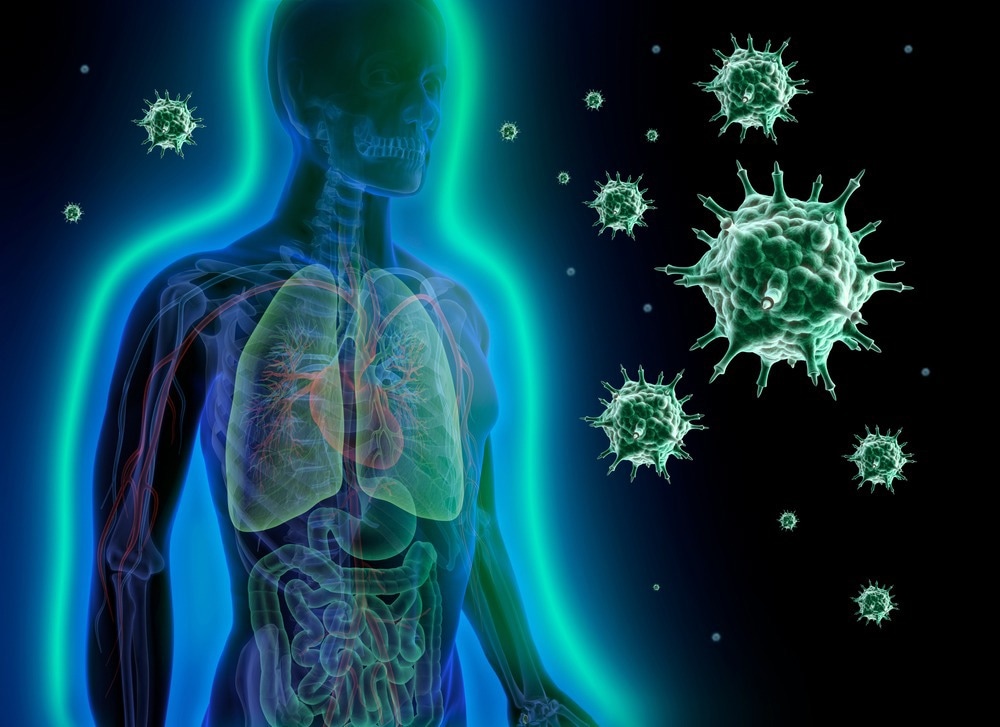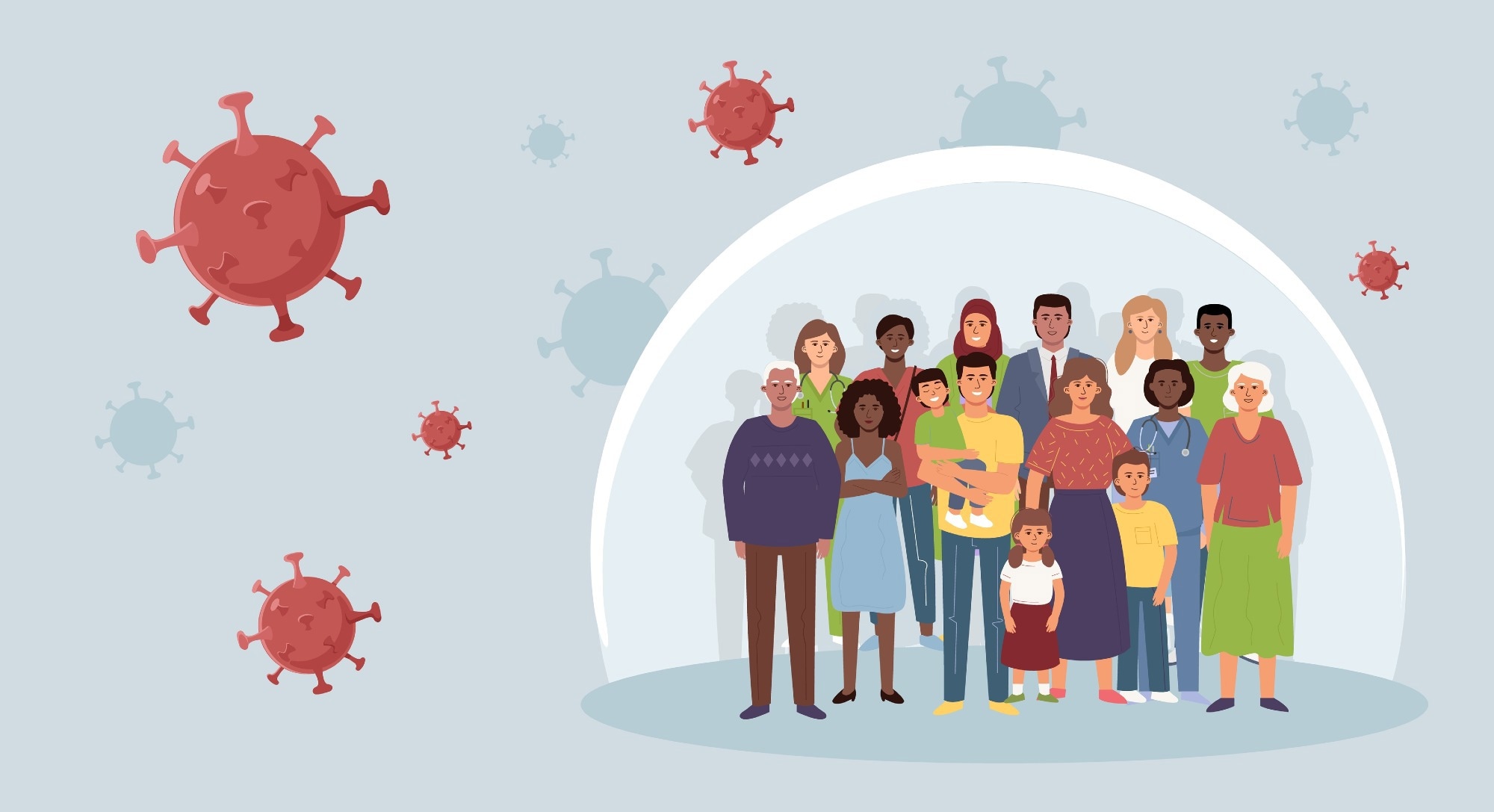The human immune system can be defined as a sophisticated network of cellular and molecular interactions protecting against foreign organisms, such as viruses, bacteria, parasites, and fungi, that threaten survival. It can be separated into two branches: innate and adaptive immunity.
Innate immunity represents the first non-specific line of defense, while adaptive immunity represents the second line of defense which is a specific response. The innate immune response cannot recognize specific foreign antigens and involves mainly physiological and inflammatory responses. Adaptive immunity can recognize specific antigens previously encountered by the immune system. This allows a more rapid and efficient immune response.
Everyone's immune system is highly variable due to environmental and genetic influences. These differences influence how each individual responds to pathogens, vaccinations, etc. This article will discuss how and why this response differs from person to person.

Image Credit: peterschreiber.media/Shutterstock.com
Immune System Variation
The successful propagation of the human species can be associated with evolutionary pressures of emerging infectious diseases that have allowed the successful development of a robust immune system. The result of this is that everyone has vastly differing immune responses. The levels of variation are not as high at birth, but exposure to new environments can increase this.
These differences can be measured by identifying important cell populations in the immune system, such as cytokines, and how these levels change in response to environmental changes and exposure to foreign antigens. The most effective way to measure this is through a blood test, which would contain circulating immune cells, especially in response to vaccinations such as the influenza vaccine, which contains an attenuated form of the virus.
Genetic Factors affecting Immune Response
From generational studies of families and twin studies, it can be ascertained that genetics significantly influence immune variation. One of the most common heritable mechanisms are cytokine pathways, which are crucial in the immune response. One of the methods used to assess these traits are genome-wide association studies (GWAS), which measure different components of an individual's immune system, such as the concentration of different cytokines, and associate genetic loci with these traits.
These studies allow different variations to be identified as well as any variations common to specific groups/communities. For example, amongst the South Asian population, high counts of lymphocytes are associated with interleukin- 7 (IL7), a pro-inflammatory cytokine that recruits T helper cells. This trait is not identified among other ethnic populations. Therefore, the South Asian population's T cell response would be different from other ethnicities.
The human leukocyte antigen (HLA), the most diverse genetic locus in the human genome, can also cause variation. HLA can be linked with many disorders/diseases that affect the immune system, such as rheumatoid arthritis (RA), type 1 diabetes, and celiac disease.
Variations in HLA can determine how an individual recognizes and responds to an infection, as the primary function of these antigens is to induce an immune response and select the appropriate subset of T cells. For example, if an individual has an HLA antigen that doesn't recognize SARS-CoV-2 effectively, it may cause them to be more susceptible to the virus.

Image Credit: Pandagolik1/Shutterstock.com
How does the Environment Influence Immune Variation?
Epigenetic changes or responses to infections and vaccines can be classed as environmental influences that cause immune variation amongst individuals.
It is commonly known that a lack of a proper nutritional diet can lead to deficiencies that can impair the immune system. This is also a reason for the diverse immune response observed. For example, a study found that a deficiency in iron, which is important for developing B and T cell responses, is common amongst infants from low-income countries. Further research showed that when this deficiency was corrected with supplements, infants responded better to the measles vaccine.
Other environmental exposures such as pollution and chemicals embedded in local surroundings also cause varying immune responses. Studies show that air pollution can be associated with inflammatory diseases.
Immune Variation in Response to Viruses
One of the most common methods of studying immune variation is systems-level analyses that study immune responses to virus infection and vaccines. This allows researchers to decipher the variations of immune responses.
Host Genetics
The host genotype determines individuals' clinically different responses to the same virus infection. Previous infections have shaped this genotype through evolutionary pressures and resulted in the diversity of the HLA alleles mentioned previously. For example, a 32 base pair deletion in the CC-chemokine receptor 5 (CCR5), which allows Human Immunodeficiency Virus (HIV) to enter cells, confers greater resistance to individuals against HIV.
Heterologous Immunity
This term is used when an immune response is generated against multiple antigenic epitopes. After exposure to one pathogen, some of these epitopes can cross-react with other epitopes from another pathogen. This allows the memory cells of this reaction to act rapidly to provide a stronger immune response, but there is a lack of protection amongst certain individuals.
For example, dengue hemorrhagic fever (DHF) affects a minority of individuals infected with the dengue virus. This was thought to be because antibodies made the virus more susceptible to phagocytosis, resulting in a cytokine storm and leakage of vasculature.
Final Thoughts
Described above are some of the factors that outline how people's immune responses can differ depending on environmental and genetic triggers. There is still a plethora of research to be undertaken to provide detailed answers to the exact mechanisms that cause these variations, as there is still a high level of individual differences that affect the reliability of this research.
References:
- Brodin, P. & Davis, M. M. (2017). 'Human immune system variation' Nat Rev Immunol, 17 (1), pp. 21-29. DOI: 10.1038/nri.2016.125.
- D'Antonio, M., et al. (2021). 'Sars-cov-2 susceptibility and covid-19 disease severity are associated with genetic variants affecting gene expression in a variety of tissues' Cell Rep, 37 (7), p. 110020. DOI: 10.1016/j.celrep.2021.110020.
- Lakshmikanth, T., et al. (2020). 'Human immune system variation during 1 year' Cell Rep, 32 (3), p. 107923. DOI: 10.1016/j.celrep.2020.107923.
- Liston, A., Humblet-Baron, S., Duffy, D. & Goris, A. (2021). 'Human immune diversity: From evolution to modernity' Nat Immunol, 22 (12), pp. 1479-1489. DOI: 10.1038/s41590-021-01058-1.
- Marshall, J. S., Warrington, R., Watson, W. & Kim, H. L. (2018). 'An introduction to immunology and immunopathology' Allergy Asthma Clin Immunol, 14 (Suppl 2), p. 49. DOI: 10.1186/s13223-018-0278-1.
- Nicholson, L. B. (2016). 'The immune system' Essays Biochem, 60 (3), pp. 275-301. DOI: 10.1042/ebc20160017.
- Rouse, B. T. & Sehrawat, S. (2010). 'Immunity and immunopathology to viruses: What decides the outcome?' Nat Rev Immunol, 10 (7), pp. 514-26. DOI: 10.1038/nri2802.
Further Reading
Last Updated: Aug 8, 2022